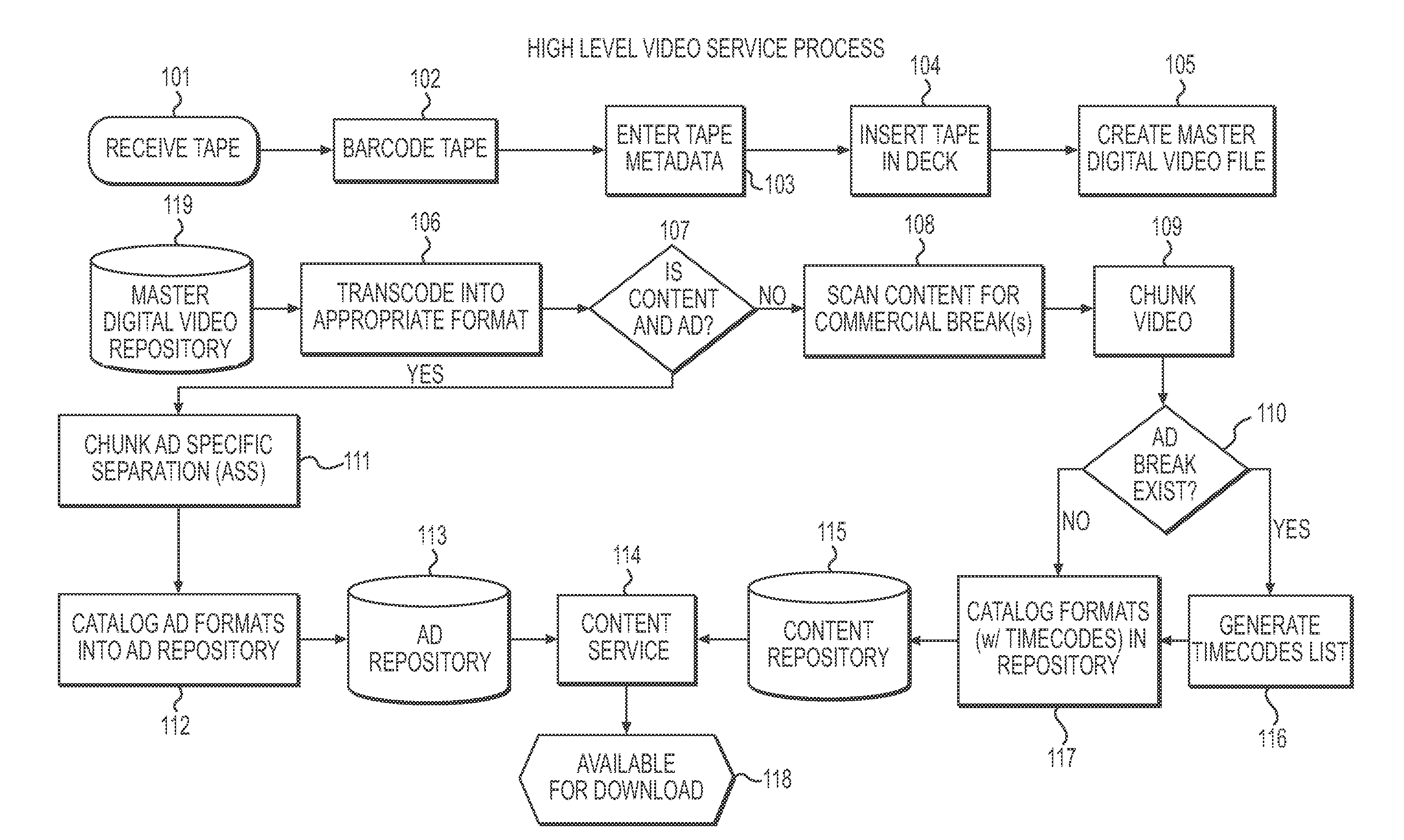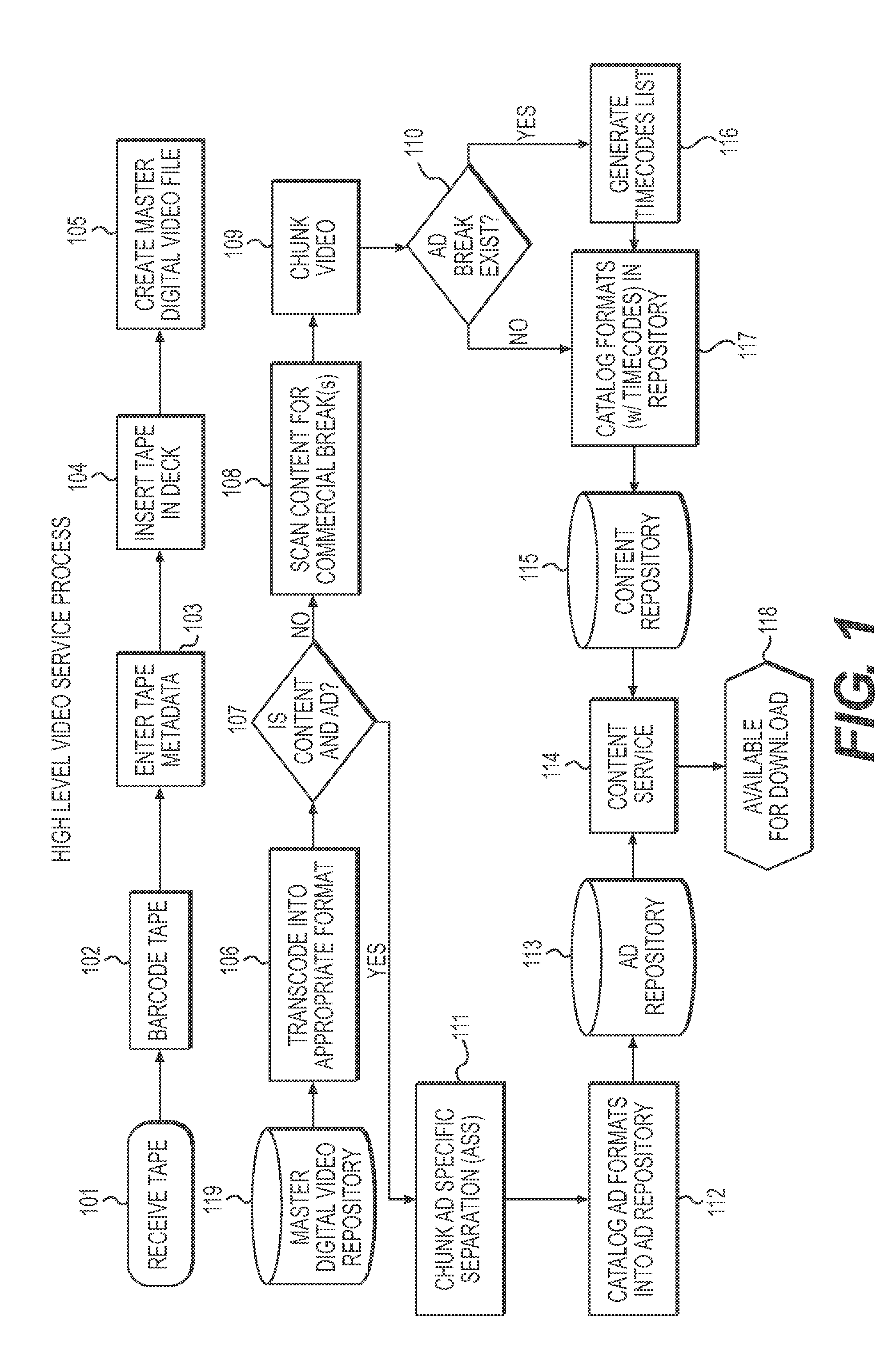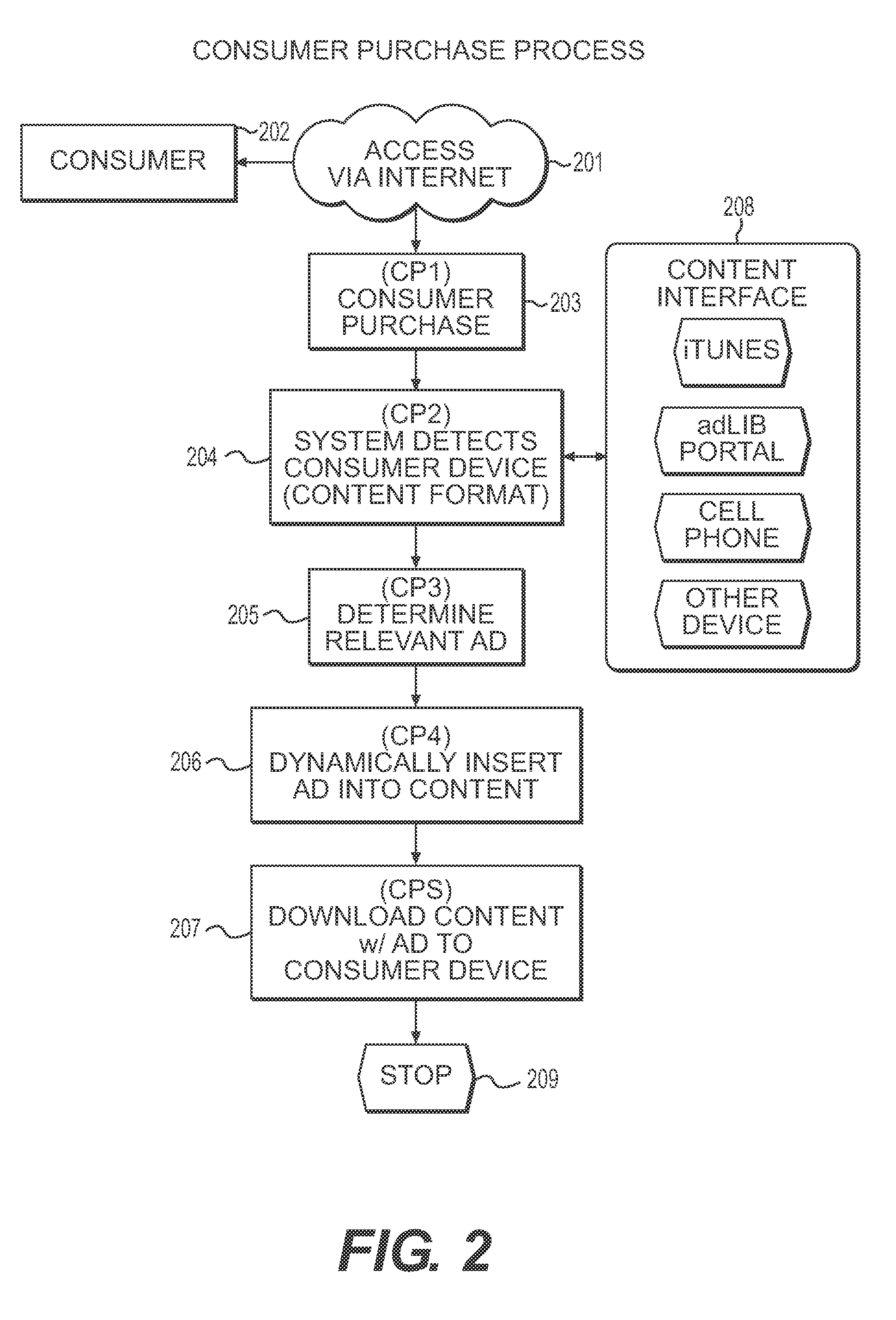System and Method for Combining Media Data
a media data and media technology, applied in the field of electronic file distribution, can solve the problems of not being applicable to all viewers, limiting the provider's ability to leverage related products, and affecting the quality of the content, so as to increase the visibility of relevant products and services, and the effect of fresh feel
- Summary
- Abstract
- Description
- Claims
- Application Information
AI Technical Summary
Benefits of technology
Problems solved by technology
Method used
Image
Examples
Embodiment Construction
[0018]1. High Level Service Process (FIG. 1).
[0019]Referring now to FIG. 1, a media file is received 101 in the format and media in which it is currently stored and inventoried so that the original hard copy of the media may be retained in a safe manner, but also in such a manner so as to allow the content to be retrieved easily either for return to the source or for re-recording of the original content. The format that the material is received in may include digital video and audio as well as older movie formats, which may be stored on reel to reel tapes, VHS format tapes, Betamax® format tapes, and the like. The media file is assigned a unique identification barcode number 102 that will then be used to track the original data source (be it Digital Versatile Disc (DVD), VHS tape, etc.) as well as the content that has been processed for advertising insertion and distribution as described below. A barcode containing the unique identifying number is physically attached to the media co...
PUM
 Login to View More
Login to View More Abstract
Description
Claims
Application Information
 Login to View More
Login to View More - R&D
- Intellectual Property
- Life Sciences
- Materials
- Tech Scout
- Unparalleled Data Quality
- Higher Quality Content
- 60% Fewer Hallucinations
Browse by: Latest US Patents, China's latest patents, Technical Efficacy Thesaurus, Application Domain, Technology Topic, Popular Technical Reports.
© 2025 PatSnap. All rights reserved.Legal|Privacy policy|Modern Slavery Act Transparency Statement|Sitemap|About US| Contact US: help@patsnap.com



